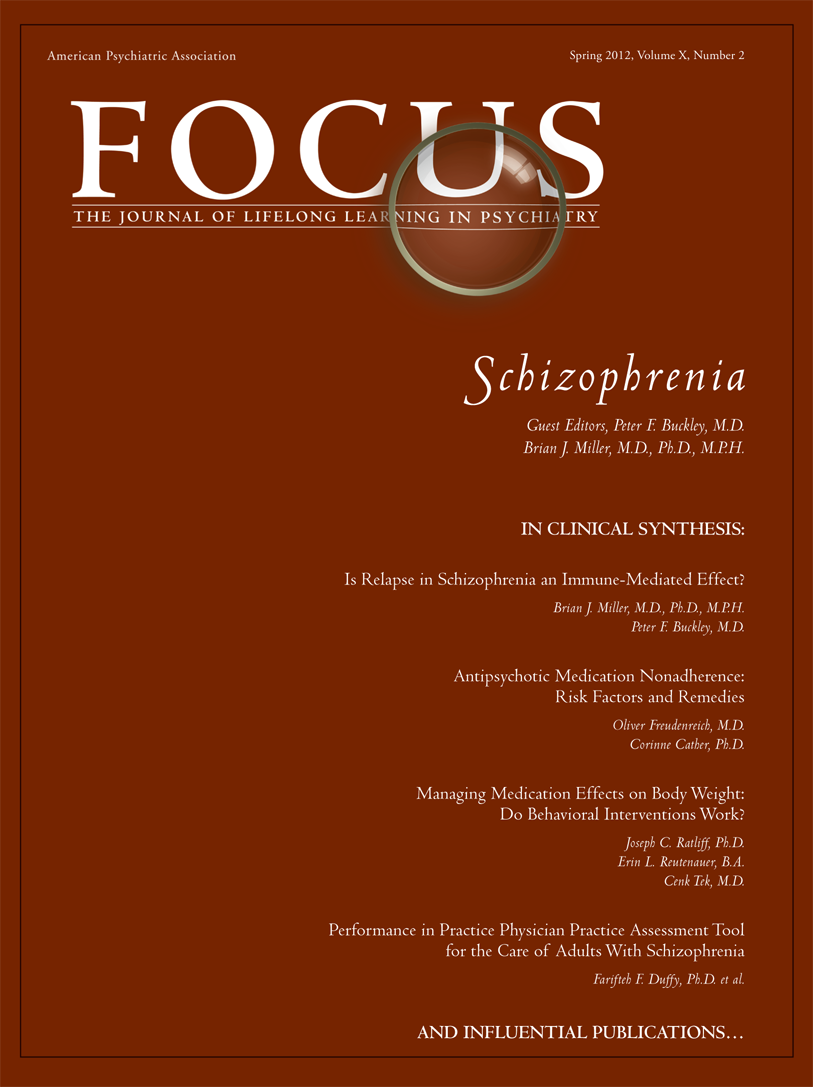Communication Commentary: Psychiatric Advance Directives
I am no bird; and no net ensnares me: I am a free human being with an independent will. Charlotte Brontë, Jane Eyre
Principles of psychiatric advance directives
Clinical vignette
“So, what did you learn last night in the Psychiatric Emergency Department?” his attending psychiatrist, Dr. Jones, inquired as the resident prepared to round on the patients seen the night before. “I saw a patient that you took care of on the inpatient service!” the resident blurted out, in the excitement of sharing his revelation. “Oh?” Dr. Jones inquired, pensively. “Yes, it was Ms. Syed.” “Ah yes, she has been here many times. Did she stop taking her medication?” “Well, yes,” the resident stammered. “As I thought. Please proceed with the case presentation,” Dr. Jones urged.“Ms. Syed is a 33-year-old widowed Islamic woman who immigrated to the US in 1999 from a Middle Eastern country with her family of origin following the death of her husband and brother. She had her first hospitalization for psychotic disorder in December of 2001, following the 9/11 attacks. Since then, she has had multiple hospitalizations for paranoia, persecutory delusions, and auditory hallucinations when she does not take her medications. She has a history of becoming very agitated and aggressive, and has needed to be restrained and to receive IM medication in the ER on all prior admissions. The police brought her to the ER last night because she was walking the streets, talking to herself, and accusing passersby of being CIA agents attempting to take her away to torture her.I looked in the electronic medical record and found the Advanced Directives that you made with her in the inpatient unit when she was there 5 months ago. At first I thought she must have a life-threatening disease, but then I saw that they were psychiatric advance directives. I had never even heard of that before. Here’s what it says, “I, Ms. Syed, being of sound mind and body, request the following, if my mental illness renders me not competent to make good decisions. 1. Please don’t restrain me. Give me space and have a woman present; 2. Call my sister, whom I give permission to make medical decisions for me; 3. Please don’t touch my head scarf. Only my sister or another Muslim woman should do that; 4. Please have only a woman do a physical exam, if it must be done; 5. I get dystonia with IM medication. Give me 24 hours to agree to take medications by myself. If I have to get medications IM, give Benadryl with it; 6. If I get paranoid about the medication, remind me that I have schizophrenia and need this medication to feel less afraid. It helps to have my sister or a woman from our mosque tell me this, too.’ She signed it, and you signed it, and her sister and a nurse.”“So, did you follow the directives?” queried Dr. Jones. “Well, yes. It’s legally binding, right? The security guards in the ER were really concerned, because Ms. Syed had been very violent last time. But we followed it. We got a woman security guard and a female nurse, and the male guards stayed right outside. At first she was really agitated—cursing, paranoid, and she kept repeating, ‘Extreme rendition—that’s what you’re planning.’ We gave her space, and then reviewed with her the advance directives she had done. She calmed down quite a bit, and was able to walk safely to the inpatient unit with her sister and an escort. I have to admit, I was skeptical, but that advanced directive plan really worked!” the resident proclaimed in the tones of awe of someone who has just witnessed a near miracle. “Amazing…” Dr. Jones mused, as he grinned sheepishly. “I had just gone to a presentation on patient-centered care and thought we should at least try this. To be honest, I didn’t believe it would work, either.”
The use of psychiatric advance directives (PAD)
Recommendations to enhance patient self-determination of care (4, 9)
| 1. | Work within a multidisciplinary team that promotes patient self-management skill development and values continuity of care for individuals suffering from serious mental health issues. Patient advocates (patients that are doing well) may be highly effective members of this team. |
| 2. | Provide information and education about the patient’s psychiatric illness to the patient and identified significant others; |
| 3. | Encourage patients and their significant others to optimize self-efficacy by: |
| a. Discussing the patient’s values and life priorities and using these to help the patient individualize his/her treatment plan; | |
| b. Discussing barriers to recovery and addressing these with the patient, significant others and treatment team; | |
| c. Encouraging the completion of Psychiatric Advance Directives when the patient is at his/her healthiest, such that self-determination, even during exacerbation of illness and impairment of judgment, is possible (at least in part). |
Conclusion
References
Information & Authors
Information
Published In
History
Authors
Funding Information
Metrics & Citations
Metrics
Citations
Export Citations
If you have the appropriate software installed, you can download article citation data to the citation manager of your choice. Simply select your manager software from the list below and click Download.
For more information or tips please see 'Downloading to a citation manager' in the Help menu.
View Options
View options
PDF/EPUB
View PDF/EPUBGet Access
Login options
Already a subscriber? Access your subscription through your login credentials or your institution for full access to this article.
Personal login Institutional Login Open Athens loginNot a subscriber?
PsychiatryOnline subscription options offer access to the DSM-5-TR® library, books, journals, CME, and patient resources. This all-in-one virtual library provides psychiatrists and mental health professionals with key resources for diagnosis, treatment, research, and professional development.
Need more help? PsychiatryOnline Customer Service may be reached by emailing [email protected] or by calling 800-368-5777 (in the U.S.) or 703-907-7322 (outside the U.S.).

